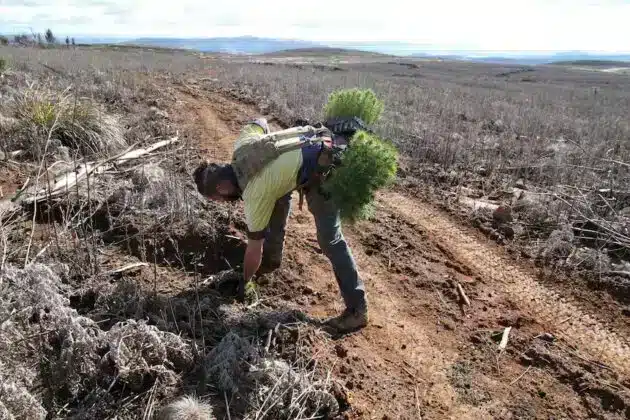As parts of Australia swelter through searing September heat and dangerous fire conditions, the Bureau of Metrology (BoM) has finally declared an El Niño event in the Pacific Ocean and a positive Indian Ocean Dipole (IOD)
It is the first time in eight years that the two weather events have occurred together and come as the Forestry Corporation of NSW announced the start of the plantation fire threat period on the Central Tablelands of New South Wales.
Last month, US scientists warned that this year’s El Nino will likely be “strong” and could lead to an elevated risk of extreme forest fire.
The National Oceanic and Atmospheric Administration’s (NOAA) El Nino update declared a 95 per cent probability that the weather event will last through to February 2024 “with far-reaching climate impacts.”
El Niño events deliver drier conditions for much of the country, particularly eastern Australia, and above-average temperatures.
A positive IOD often results in less rainfall than average over parts of Australia, and when the two patterns coincide, it can magnify the drying effects.
According to BoM manager of Climate Services, Karl Braganza, the two weather events can be “accompanied by an increase in fire danger and extreme heat risk.”

According to ASEAN, El Nino brings drier weather increased forest fire and haze risk throughout Oceania and South East Asia.
Bushfire season typically runs from December to May in southern Australia, May to October in northern Australia and August to March in central Australia.
“It’s really up to individuals and communities now to prepare for a summer of heat and fire hazards.”
He nonetheless acknowledged that conditions were not as bad as they were leading into the catastrophic fires of Australia’s Black Summer. Still, he also warned things were rapidly drying out after three consecutive years of wet conditions.

“Leading into Black Summer in 2019 … we had years of preceding drought,” he said.
“We do have a wetter landscape out there, (but) it is drying out more rapidly than in recent years.
“We are already seeing extreme conditions in some parts of the continent, particularly in the duration of heat, so we’ve had an extended period of warm and dry weather to start spring.
“Today, we’ve had catastrophic fire conditions on the south coast of NSW, just to underscore that risk.”
In June, Wood Central reported that Australia should prepare for a “hazardous 2023-24 bushfire season.”
The warning came from three professional foresters who have observed current pastoral conditions across three states.
“The whole countryside is carrying a body of grass as big or bigger than ever in my memory,” Peter Lear said.

Professor Delene Weber, an environmental scientist and bushfire researcher at the University of South Australia, said because much of the continent likely faces a “warmer, driver summer”, it was essential to update and rehearse bushfire survival plans.
“It may sound over-zealous, but assigning a day and rehearsing your bushfire plan could help you identify areas for improvement, and importantly, that rehearsal could be invaluable if you were to experience a fire,” Professor Delene said in comments distributed by the Australian Science Media Centre.
“Lastly, talk to your neighbours. It takes a community to make an area bushfire safer. Consider offering to help people with mowing, pruning or clearing gutters.”
In preparation for the season, bushfire-impacted areas residents are urged to download a new app to monitor fire risks and hazards.
Known as ‘NOBURN’, the app has been developed by researchers from USC and the Australian Institute for Machine Learning at the University of Adelaide.
The data and images recorded through the app help researchers understand the structure, quantity, density, and dryness of forest fuels.
With the help of AI, it can better predict the likelihood, severity, and extent of potential fires.
Dr Sam Van Holsbeek, USC Research Fellow, urges Australians to download the app before the upcoming bushfire season.
“We want the community to go out into the forest and collect evidence to monitor forest fuel in our forested locations,” he told Sky News Australia.
The information is used as a hazard rating for the different forests and fuels to determine if better predictions of bushfires can occur.
This includes the NSW Central Tablelands, where Forestry Corporation Community Programs Coordinator Nikki Bennetts said the move aims to safeguard the region from the threat of bushfire.

“Due to warm, dry and windy conditions, the solid fuel fire ban is in place across State forests in the Central Tablelands this week and will continue until conditions ease.”
“Campfires and barbecues using wood, charcoal or other solid fuels are banned until further notice.
“Gas barbecues or similar gas appliances are allowed unless a Total Fire Ban (TOBAN) is declared.





